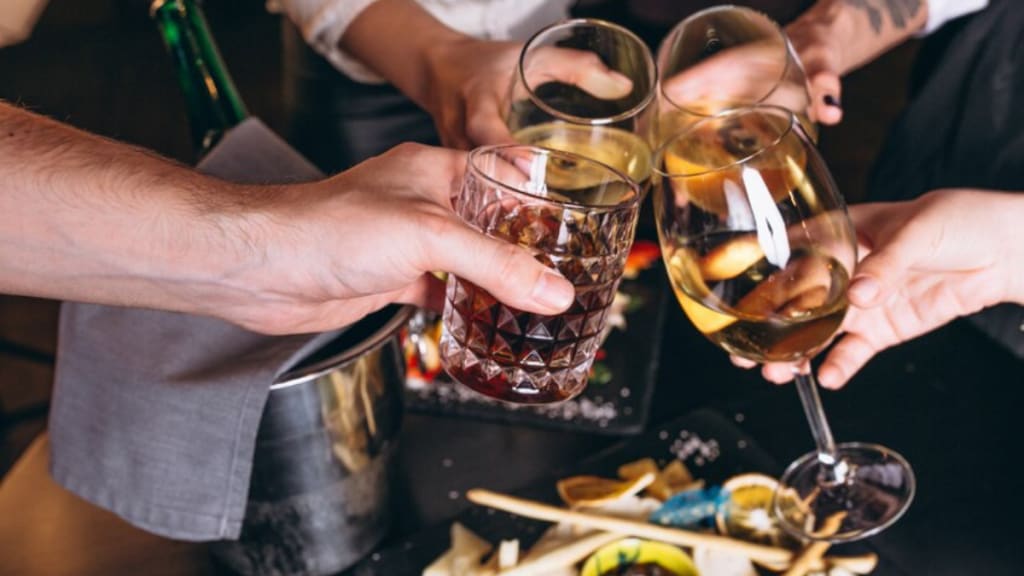The alcohol industry in India, while historically lucrative, operates within one of the most complex regulatory frameworks in the world. With regulations varying dramatically from state to state, the sector has always been a challenging arena for brands. Regulatory changes, however, have added even more complexity, pushing alcohol brands to reassess and adapt their strategies across product innovation, marketing, and market positioning. “In this highly regulated landscape, surrogate advertising like soda or bottled water branding will always stay but experiential marketing through branded events like music festivals or sports sponsorships will be the next immersive way for brands to engage with consumers, fostering loyalty and building strong associations with lifestyle experiences. I feel that sports and gaming brands will see a new wave of such advertisers coming to sponsor” Sumon K Chakrabarti, CEO and co- founder, Buffalo Soldiers, told BrandWagon Online.
In India, the alcoholic drinks market is expected to generate $47.1 billion in revenue at home (e.g., supermarkets) and $5.6 billion out-of-home (e.g., bars), totalling $52.7 billion in 2024. At-home revenue is projected to grow annually by 4.00% (CAGR 2024-2029). The market volume at home is expected to reach 10.8 billion litres, with 832.5 million litres out-of-home, totalling 11.6 billion litres. Volume growth at home is projected to decline by 0.8% in 2025. The average revenue per capita at home is $32.66, and the average volume per person at home is 7.46 litres in 2024, according to Statista. Additionally, India’s alcoholic beverage market is ranked sixth globally in terms of revenue generation.
In recent years, several states have enacted stricter regulations around the sale and distribution of alcohol. Some, like Bihar, Gujarat, and Nagaland, have enforced complete prohibition, while others, including Tamil Nadu and Kerala, have introduced measures to limit alcohol consumption. The central government has also imposed more stringent advertising restrictions, particularly targeting digital platforms, where alcohol brands had previously found some leeway to promote their products. These developments have made it imperative for alcohol brands to navigate this evolving landscape with agility and foresight.
Experts believe that one of the most significant impacts of these regulatory changes is on product innovation. With increased taxes and tighter controls, brands are shifting their focus toward premiumisation. Higher excise duties in states like Maharashtra have driven up prices, pushing brands to introduce premium products that can justify these costs. As a result, the market has seen an influx of craft spirits, single malts, and limited-edition variants that cater to more affluent consumers willing to pay for quality and exclusivity. At the same time, there is a growing interest in low-alcohol and non-alcoholic beverages, driven by health-conscious consumers and the stringent regulatory environment. Brands are capitalising on this trend by launching alcohol-free beers and mocktails, offering consumers a similar experience without the associated regulatory challenges.
However, it is believed that the path to innovation is fraught with difficulties. Industry experts opine that the need to comply with varying state regulations adds layers of complexity to the product development process. From obtaining ingredient approvals to adhering to specific labelling requirements, brands must navigate a labyrinth of rules that can delay product launches and inflate costs. The regulatory environment necessitates a more cautious approach to innovation, with brands investing considerable resources in ensuring compliance across multiple jurisdictions. “The alcohol industry is a bit challenging when it comes to cutting a balance between creative messaging & regulations. The most distinct approach therefore revolves around a though-out narrative bundled with storytelling & emphasising the brand’s heritage, quality, and craftsmanship—elements that resonate deeply with consumers and differentiate the brand in the market,” Sharad Gupta, founder and CEO, WNN-WhyNotNow Brand Consultancy, Marketing Thought Leader and Co-Author, Back From The Brink, said.
Marketing alcoholic beverages in India has always required creativity due to strict advertising laws. The central government’s push for tighter restrictions on digital advertising and the introduction of rigorous age-gating measures have forced brands to rethink their marketing strategies. With traditional advertising avenues further limited, brands are increasingly relying on surrogate advertising, where they promote non-alcoholic products like soda or water under the same branding as their alcoholic counterparts. This approach keeps the brand name in the public eye without directly advertising alcohol. “Content marketing and digital strategies are critical, to enable brands to subtly reinforce their identity through engaging the pop culture and emerging sub-cultures. Responsible causes have become another crucial parameter, some brands are doing it perfectly while aligning their brand to a conscious lifestyle,” Chakrabarti highlighted.
It is also believed that social media remains a critical channel for alcohol brands, but the landscape has changed. Influencers and brand ambassadors are still essential for reaching younger audiences, but partnerships must be managed carefully to comply with new regulations. The focus is now on promoting responsible drinking and aligning brand messaging with social norms and regulatory expectations. It has been observed that brands are also exploring new ways to engage consumers, such as interactive content and virtual experiences that can bypass some of the stricter advertising rules. “Experiential marketing, like virtual tastings and exclusive events, in particular, are exciting initiatives to engage directly with our consumers and foster brand loyalty thereby maintaining a strong perception & niche in the market,” Gupta said.
The regulatory changes which restrict alcohol brands from direct advertising have also influenced how alcohol brands position themselves in the market. With rising taxes and increased restrictions, brands are adapting by targeting different consumer segments. Industry experts opine that premium and super-premium products are receiving more attention as brands seek to attract affluent consumers who are less sensitive to price increases and more interested in quality and exclusivity. Meanwhile, mass-market brands are adopting value-driven strategies to retain their customer base. Offering smaller packaging sizes, for example, makes products more affordable and accessible in a price-sensitive market.

